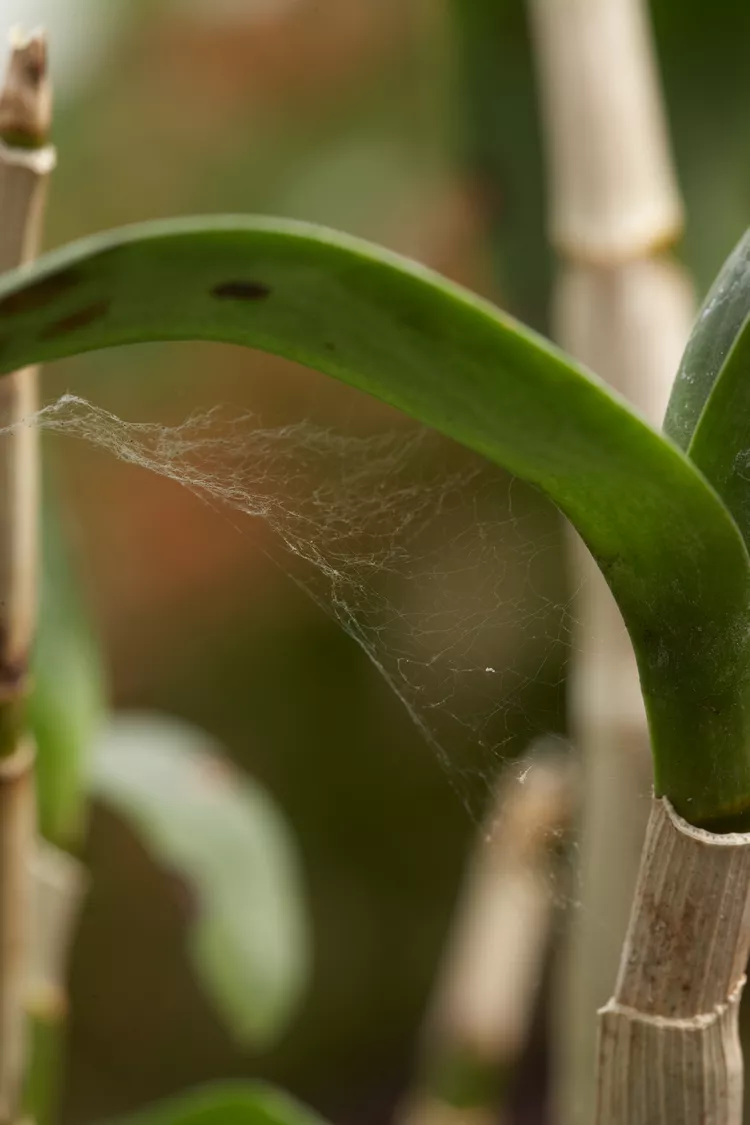Take a close look at any leaves on your houseplants that are yellowing and have a stippled and dusty look. Perhaps you've also noticed tiny webs forming over flower buds, between leaves, or on the lower surfaces of the leaves. Then you've likely got spider mites on your indoor plants. A good way to check for these common houseplant pests is to tap affected leaves over a white piece of paper to cause the mites to fall off. If you see tiny specks moving around on the paper, you’ve found spider mites. These pests can multiply quickly, so immediate action is best when you find them on your favorite houseplants.
What are spider mites?
Like their name implies, spider mites have eight legs like spiders so they're not actually insects, which have six legs. These mites can be red, green, or yellow in color, but are barely visible to the naked eye. Their tiny webs, which are easier to spot, are a tell-tale sign of their presence. The mites suck sap from plant leaves, resulting in leaves becoming mottled and unhealthy-looking. A heavy infestation can cause leaves to fall off the plants and new growth to become stunted. And don't worry, spider mites aren't harmful to people and they won't spread around your house. They only live on plants.
Methods for Getting Rid of Spider Mites
There are several ways to get rid of spider mites on indoor plants. You can physically control the pests by wiping them away with your fingers or soft cloth, and washing them off with water. Or you can use chemicals to kill spider mites.
1. Physical Controls
Try this approach first, because it will usually do the trick so you won't need to resort to using toxic chemicals. Rinse the infested plant in the shower or with a hose if temperatures are warm enough outside to not harm your plant. Make sure to direct the water to the undersides of the leaves, which is where spider mites typically hang out. It may take a few rinses to remove all the mites. Increasing humidity around your plant also discourages these pests, which prefer warm, dry conditions.
2. Pesticides
There are two different types of pesticides: contact and systemic.
Contact pesticides: These are typically applied in liquid form as a fine spray. This kills spider mites quickly before they have time to multiply. Most of these products have a very unpleasant smell and should not be inhaled. To treat plants, make sure to spray outside in a well-ventilated area, such as the garden or a balcony. Some pesticides can harm non-target species, such as birds and fish, so handle them carefully and always follow label instructions. A few least-toxic options include insecticidal soap and neem oil.
Systemic pesticides: You can apply these types of pesticides in several different ways. They can be mixed with water and poured over the soil, sprinkled over the plant as a granular product, or pushed into the soil as a “pin” or “spike” as well as being sprayed onto the plant. The active ingredients in the pesticide enter the plant and poison pests after they feed on the plant. These chemicals have a longer-lasting effect than contact pesticides, which only kill pests that are directly in contact with the spray.




















